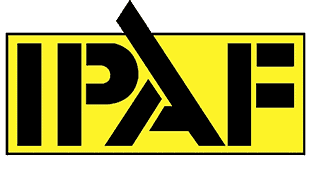Having your roof professionally cleaned has a range of benefits, including increasing the roof's lifespan, reducing the risk of costly repairs, and improving its attractiveness. Using specific professional roof cleaning methods will keep your roof clean and maintained. Read on for our comprehensive guide on how to clean a roof professionally.

Regular cleaning of your roof has several benefits that make it an essential part of your home maintenance.
Perhaps the most important benefit of roof cleaning is that it will prevent damage to your roof. Accumulated debris, moss, and algae look unsightly, but they also damage your roof tiles.
Organic growth traps moisture against the surface of the roof tiles instead of being allowed to drain away as normal. Over time, this moisture can degrade the roof tile material, allowing water to leak through to the roof structure below. If left untreated for too long, the water can cause structural damage that will be costly to fix.
A roof that is covered in dirt, debris, moss, and algae doesn't look attractive, and the roof is one of the first impressions anyone gets of your home. Getting your roof cleaned provides a boost to your home's appearance, and makes it feel fresh again.
This is especially important if you are considering selling your property. Any potential buyers will have a more favourable first impression of your home if the exterior, including the roof, is clean and well-maintained. It will also tell them that the likelihood of their being hidden roof damage is quite low.
Roof cleaning, whether it's done by a professional roof cleaning company or as a DIY project, will cost money upfront, but it will likely save you money in the long run. We've mentioned that moss and algae will eventually cause damage to the roof tiles or even the roof structure, and the cost of repairing these will far exceed the cost of cleaning the roof.
Check out our post “How much does roof cleaning cost”.

Before we take you through the professional roof cleaning process, we should mention that in many cases, it is inadvisable to clean your roof yourself. Regardless of the cleaning method, cleaning a roof is dangerous because of the risk of slips and falls from height.
Working on a roof can be dangerous and there are some key precautions you should take to keep yourself and other people safe.
If you are using chemicals, you should make sure that you follow all the directions carefully, wear a mask, and protecting surrounding plants with plastic sheeting.
It is also important to never work on a roof alone. There should always be someone with you who can step in to help or call for help if anything goes wrong.
Before cleaning, you should carefully inspect your roof for damage. There are two reasons for this. First, most cleaning methods you use have the potential of making the damage worse, or excess moisture reaching the roof structure due to the damage. Second, it could make it unsafe for you to work on the roof because it is more unstable.
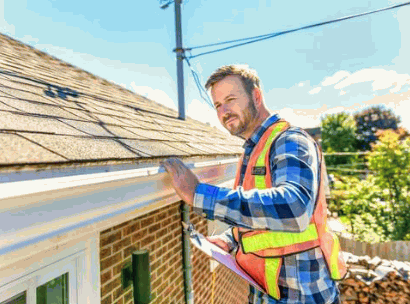
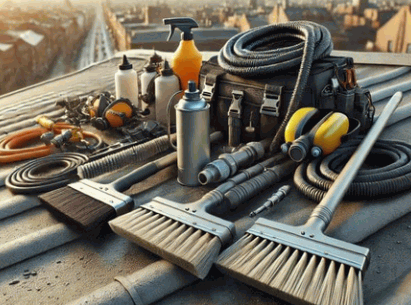
There are several methods you can use for cleaning your roof. Some of these are more suitable for certain roof tiles than others, and some should really only be used by professional roof cleaning services.
Soft washing a roof is the gentlest method that reduces the risk of damage to your roof tiles. First, clear any loose debris using a broom or a leaf blower. Pay particular attention to ensuring that the gutters are clear of leaves and twigs.
View our post for more information on "What is soft wash roof cleaning".
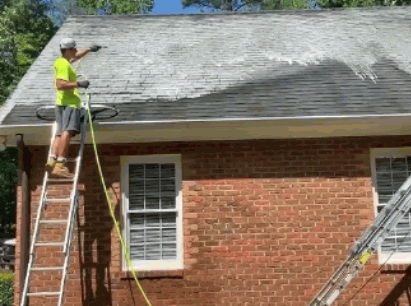
If your roof has moss growth, this will need to be removed. You can clear this manually by carefully scraping with a trowel or scraper and a thick brush, working your way from the top to the bottom.
Alternatively, you can apply a biocidal roof wash to kill the moss. Use a sprayer or apply manually with a brush, then leave it to work according to the manufacturer's instructions.
Then, use a brush to carefully remove the dead moss with a stiff brush, before rinsing with a garden hose.
Read our post "How to clean roof moss".
Once the moss has been removed, you can clean the tiles themselves. There is a range of cleaning solutions you can use to clean your roof, including biodegradable and non-toxic options that won't harm any surrounding plants.
Apply the solution to the roof using a low-pressure sprayer. Some cleaning products have a sprayer included that can be attached to a garden hose.
Leave the solution to work. This will usually take between 20 and 30 minutes, but the directions will specify. Then rinse with a garden hose or low-pressure sprayer. If there are any patches with stubborn stains, you can scrub these with a stiff brush, being careful not to damage the tile surface.

It is generally not advisable to use a pressure washer to clean your roof. It is an effective cleaning method in the hands of a professional, but it can easily cause damage to your roof if handled incorrectly.
A high-powered pressure washer uses a motor to pump water through a narrow nozzle, creating a high-velocity stream that can lift and remove moss and any other roof contaminants. Detergent or other cleaning solutions can also be used using an attached tank.
Some types of roof tiles are not suitable for a pressure wash because they are easily degraded by high-powered water. For example, asphalt shingle roofs or clay tile roofs should not be pressure washed.
It can be effective on concrete tiles, but caution still needs to be taken.
Have a look at our post "How to clean roof tiles without a pressure washer".
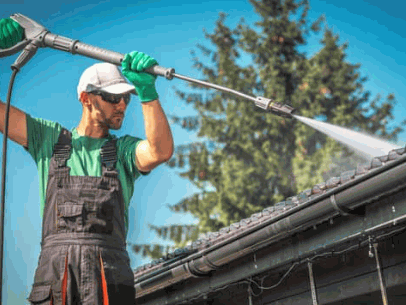
A pressure washer with a PSI of 1,200-1,500, or lower, should be used to avoid causing any damage to the roof tiles. You should also use a wide-angle nozzle, which will reduce the intensity of the water stream.
When pressure washing, keep it at the lowest pressure setting to start, along with the widest nozzle. Work from top to bottom of the roof to prevent water from seeping under the roof tiles, holding the nozzle at a 30 to 45-degree angle around 6-12 inches from the surface of the roof.
Keep the spraying motion in gentle, overlapping motions to avoid any prolonged pressure on a single area.
Then rinse the roof with low-pressure water to remove all soap residue and dirt.
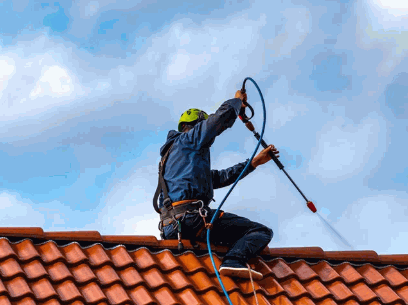
Steam cleaning is an alternative method for cleaning a roof that is less damaging than pressure washing. Like pressure washing, however, this equipment should generally only be handled by a professional due to the risk of harm to yourself and of damage to the roof.
Most roof-specific steam cleaners operate at a temperature of 100°C. The high-temperature water kills moss and algae, and lifts dirt and grime. Because it is low-pressure, however, there is less risk of damaging the roof tiles. It is also more environmentally friendly because it doesn't require the use of any chemicals like biocidal roof wash or detergent.

Start at the top of the roof and work your way down in sections. This prevents water from pooling on the roof.
Keep the nozzle a few inches away from the roof surface to avoid concentrated heat in one spot, and use a smooth, sweeping motion and overlapping strokes to ensure that the entire roof is cleaned.
If you do notice any problem areas, such as those with a thick coating of moss or surface dirt, you should use slower, more frequent passes to ensure that it is fully removed.
Rinse with a low-pressure water sprayer to ensure that any loose dirt or moss is removed.
Once you have a clean roof, you can take some steps to ensure that it is protected in the future.
You should get your roof cleaned every one to three years, depending on the roof material, and the property's location. Regular cleaning will ensure that your roof is well-maintained and protected from damage.
Preventing roof moss is key to keeping your roof clean and free from damage. You can apply a moss inhibitor or use zinc or copper strips to reduce the chances of moss growth.
Keeping your gutters clean helps to prevent roof moss and allows your roof's drainage system to work as it should, reducing the chance of water ingress and damage.
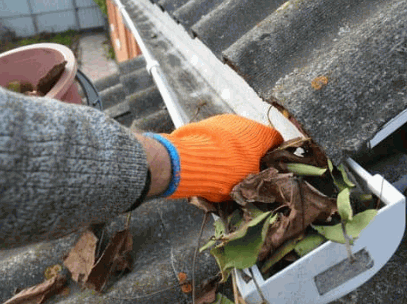
In almost all cases, getting your roof cleaned by a professional is a worthwhile investment. We have mentioned the dangers that working on a roof can pose. A professional will have had specific training in the proper safety protocols for working on a roof, and will have high-quality safety equipment that they know how to use.
Some roof cleaning methods, like pressure washing and steam cleaning, use specialised equipment. This equipment poses even more danger to you and increases the chance of injury, and it also carries with it the risk of damaging the roof tiles. Professional roof pressure washing companies or steam cleaning companies understand how to use this equipment safely, and how to avoid damaging delicate roofs. They will also know when it is inappropriate to use these methods.
If your roof is covered in moss and dirt, we can help. Our professional roof cleaning services ensure that your roof is cleaned to a high standard, while protecting your roof tiles and materials from damage.
We will first assess the condition of your roof, with a thorough professional inspection to look for damage. After any necessary repairs are made, we will recommend the most appropriate cleaning method for your roof.
Our team of highly trained and experienced technicians pride themselves on making all of our clients' roofs look like new again, and ensuring that their lifespan is as long as it possibly can be.
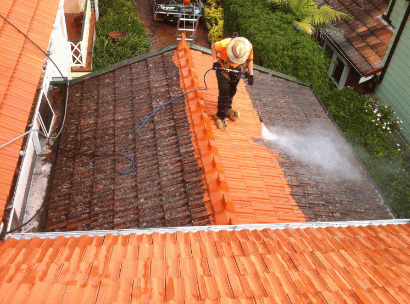
Professional roof cleaning methods help your roof to look its best, protect it from damage, and increase its lifespan. There are several methods that can be used, but it is usually better to use a professional roof cleaning company, due to the safety risk and the potential to cause costly damage to the roof tiles if the methods are used incorrectly.




